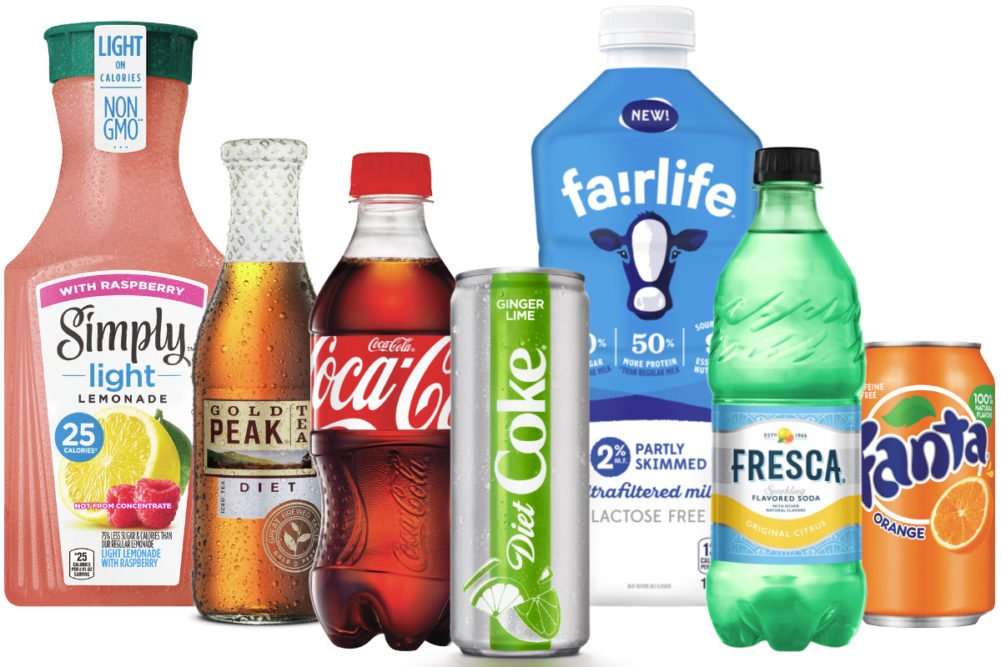ATLANTA – The Coca-Cola Co. is making changes to its portfolio of brands and innovation process with an eye toward improving efficiencies. Fallout from the coronavirus (COVID-19) and the uncertain macroeconomic environment that may follow has management preparing for a global economic environment that may take two to three years to recover.
“We are leveraging the crisis as a catalyst to accelerate the business transformation that was already underway,” said James Robert B. Quincey, chairman and chief executive officer, during a July 21 conference call to discuss second-quarter earnings.
The goal will be to develop a product portfolio that combines strong global brands with regional and scaled local brands.
“We need to do a better job nurturing and growing smaller, more enduring propositions and exiting some zombie brands, not just zombie SKUs (stock-keeping units),” Mr. Quincey said. “As a reference point, of our 400 master brands, more than half are single-country brands with little to no scale. The total combined revenue of those brands is approximately 2% of our total. They're growing slower than the company average, but each one still requires resources and investment.”
Using its recently canceled Odwalla brand as an example, Mr. Quincey said the change will give Coca-Cola the flexibility to support investments in brands like Minute Maid, Simply and Top Chico.
Changes to the company’s innovation process will focus on bigger, more scalable bets and better discipline in experimentation, Mr. Quincey said.
“We need to do a better job nurturing and growing smaller, more enduring propositions and exiting some zombie brands, not just zombie SKUs." – James Robert B. Quincey, The Coca-Cola Co.
“We are raising the bar and adding more discipline to our innovation pipeline against defined criteria, either recruiting new consumers, increasing the frequency of existing consumers and/or being margin-accretive,” he said. “We are leading with global bets like the continued opportunity with reduced sugar offerings in brand Coke.
“We’ll also continue our high-potential regional and local bets, like AHA flavored sparkling water in the US. AHA captured double-digit retail value share in its first 18 weeks and has even more potential given its wide appeal.”
Additional categories of innovation will include functional beverages and contactless solutions.
“We’ll prioritize innovation centers on products, packaging and equipment,” Mr. Quincey said. “For example, we announced the introduction of touchless Freestyle machines in the US, which allows consumers to choose and pour drinks from their phones in just a few seconds without the need to create an account or download an app. This is an example of leveraging increased flexibility to create a solution, test it and roll it out in a few months.”
Pushing management to accelerate the company’s business transformation was a weak second quarter and uncertainty about market conditions around the world. Net income for the quarter ended June 26 fell 32% to $1.8 billion.
Quarterly sales fell 28% to $7.2 billion.
“While we believe the second quarter will be the most severely impacted, we do expect the top-line trajectory to continue to correlate closely to the level of mobility of consumers and the health of the away-from-home channels,” said John Murphy, chief financial officer.
Volumes were down 16% during the quarter. Organic revenues declined 26%, driven by a 22% decline in concentrate shipments and 4% decline in price/mix.
“Underlying gross margin was down approximately 300 basis points, primarily driven by volume declines in capital-intensive finished goods businesses like Costa, foodservice in North America and our bottling investments in addition to negative package and channel mix pressure,” Mr. Murphy said.
The company did not issue full-year earnings guidance, citing market uncertainty as the reason.
“The pandemic is not behind us,” Mr. Murphy said. “There is still good reason to be cautious as global COVID infections continue to increase, with case growth generally shifting from developed to emerging markets.
“While we are seeing sequential improvement, recovery will likely not be linear. Some markets that were recovering are having a second spike in cases like we're seeing in Iran, Australia, Romania and here in the United States. Depending on the trajectory of recovery in away-from-home, channel and package mix will continue to put pressure on our gross margin.”





